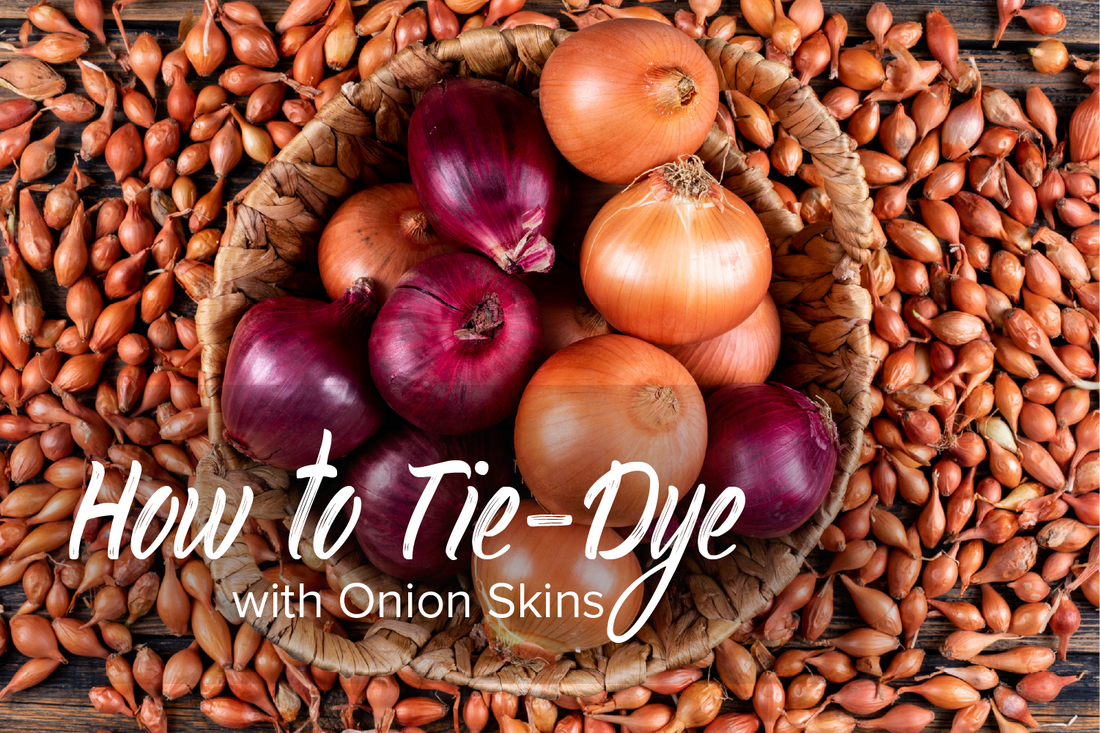
Tie-Dying Is Back but This Time Let’s Do It Naturally

Tie-dyed clothing is not a new fashion trend. Probably everybody remembers the 1960s and 1970s when the bright, colourful tie-dyed clothes reached the peak of their popularity. Hippies were spreading hope, love and peace wearing these fun and free-spirited garments. They represented freedom and flourishing at that time. Since then tie-dye garments came and went with fashion trends and now they are back again. This time in a different way, yet again brought by a new movement for a better future and with a little more natural aesthetic.
In the 1960s tie-dye garments were dyed with synthetic dyes containing a lot of chemicals and acid. In reverse tie-dye methods bleach is used to form patterns on the already bright colored fabric. Unsurprisingly the mass production of garments used with these dying techniques caused and are still causing massive environmental harm. So why not make your tie-dye garments yourself with natural ingredients? You will not only have fun dying your own garments but they will be dearer to you knowing that the garment dye is completely eco-friendly.
Nature provides us with an abundance of natural dyes and some of it you may find in your garden, pantry or in a park nearby. Natural dyes are made of different kinds of plants. The most popular and accessible plant dyes are onion skin, turmeric powder, red cabbage, beats, avocados, blueberries, weld, coreopsis, dahlias, sulphur cosmos, marigold, sunflower and dyer's chamomile etc. If you are not fond of collecting your natural dye ingredients, we have several 100% natural dye options among our products like white oak gallnuts, red pine bark extract, weld powder, pomegranate peel powder etc. You can check them out at themazi natural dyes
For the sake of simplicity and accessibility, this time we are going to make tie-dye with onion skin.
Onion is a bulbous plant grown for its use in food, they are used all over the world. As the onions become fully grown, the foliage dies back, and the outer layers of the bulbs turn crispy and papery. It is these leaves which are used to create yellow and orange/brown shades, and soft olive greens with the addition of iron. Onion is one of the easiest dyestuffs to use as it does not require a mordant and can safely be used in your kitchen.
How to dye with onion skins:
Ensure your fibre/fabric has been properly scoured or mordanted before use. You can read our blog on how to scouring and mordanting.
Bundle up your fabric and tie it together.
Use two good handfuls of onion skins to make a dye bath. If you want to be scientific about it, approximately 30g of onion skins will give a strong colour on 100g of fibre.
Place the skins into a pan and cover with water, enough to ensure your fabric/fibre can be moved around easily for even uptake of the dye. Bring the dyebath to the boil and simmer for 30 minutes.
Remove the skins if you wish. Add your wet/damp fibres and simmer the dye bath for a further half hour. Allow the dye bath to cool for several hours or overnight, stirring occasionally.
Extra Tips:
- A second and subsequent use of the dyebath can be made, which will result in paler shades than the first dyebath. Simply reheat the bath and add more fibres/fabrics.
- For soft olive-green colours, dyed fibres can be dipped briefly into an iron solution. Rinse fibres thoroughly after the iron dip. You can make the iron solution from iron sulphate or from rusty metal which you have soaked in 50:50 water for a week or so.
- You can watch our friend Billynou dying with onion skins. BillyNou’s channel is about the wonderful process of natural dyeing she does for her brand, life, motherhood and the trials and errors of making and crafting. She likes to inspire others to become more conscientious, to find a connection with nature and benefit from this immense and totally accessible energy.